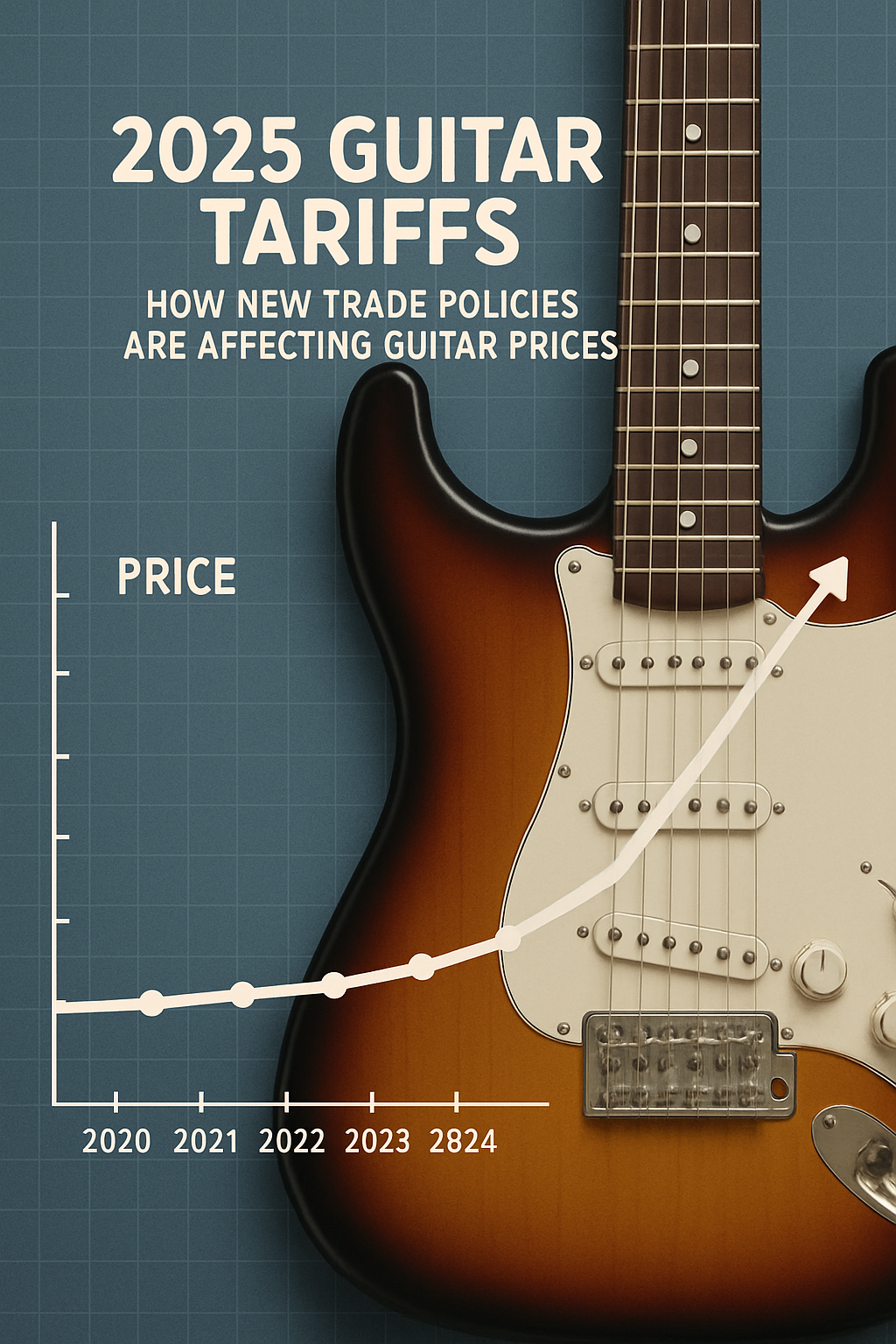
Read Time 3 Minutes
**UPDATE – After a meeting with China, the US says tariffs will be “lowered” for 90 days – and the beat goes on.
If you’ve been eyeing that shiny new Strat or Les Paul, you might want to reach for your credit card sooner rather than later. The guitar world is buzzing with concern as President Trump’s recent tariffs threaten to jack up prices across the board.
What’s Going On With These Tariffs?
In February 2025, the Trump administration dropped a bombshell on the music industry by imposing a 25% tariff on goods from Mexico and Canada, along with a 10% tariff on Chinese imports (with threats to boost that to a whopping 60%). These tariffs were officially implemented on March 4, despite temporary pauses and negotiations.
The White House says these measures aim to combat issues like drug trafficking and illegal immigration, but for guitar players, the immediate impact is hitting our wallets.
Why Do These Tariffs Matter for Guitarists?
If you’re wondering why this matters to us string-slingers, it’s because the guitar industry is incredibly globalized. Think about where your favorite axes come from:
- Mexico: Home to Fender’s Ensenada factory, which pumps out all those beloved Player Series Strats and Teles
- China: Where many budget and mid-range guitars are born, including Squiers, Epiphones, and countless components
- Canada: Supplies essential tonewoods like maple that even “American-made” guitars rely on
According to recent industry reports, Fender alone faces an estimated $20-25 million increase in operating costs due to these tariffs. That’s not pocket change, even for a guitar giant.
How Are Prices Actually Changing?
Let’s get specific about what this means for your next guitar purchase:
- Entry-level models: A $199 Squier Bullet might soon cost $250 or more
- Mid-tier guitars: Expect Mexican-made Fenders and similar instruments to jump $50-150
- Even American-made guitars: Could see 10-15% price increases due to imported components
Major retailer Sweetwater has already warned customers that prices could increase by as much as 25% in the coming months. Their advice? “If there’s something you’ve been thinking about buying, our best advice is to get it now before the price goes up.”
The Ripple Effects Across the Industry
The impacts go well beyond just higher price tags:
- Used market surge: As new guitar prices climb, expect the secondhand market to heat up, potentially driving those prices higher too
- Production shifts: Manufacturers are already looking at moving production to countries like Indonesia to mitigate costs
- Boutique builders hit hard: Small luthiers relying on imported woods and components might face even greater challenges than the big brands
John Mlynczak, CEO of the National Association of Music Merchants, summed up the industry’s predicament perfectly when he told Reuters: “This is a highly specialized industry. It’s not like you could send CNC drawings to a different factory tomorrow.”
Who’s Getting Hit Hardest?
Different segments of the market are feeling the pain in different ways:
- Fender: Their credit rating has already been downgraded by Moody’s due to tariff concerns
- First-time players: Higher entry-level prices could discourage new musicians from picking up the instrument
- Working musicians: The folks who “pile $5k of equipment into a $1k car to drive to a $100 gig” will feel these price increases acutely
Is There Any Good News?
It’s not all doom and gloom. In early April, President Trump announced a 90-day pause on some of the tariffs, providing temporary relief. However, the China tariffs remain in effect and have actually increased to 20% as of March.
For savvy buyers, there might be a silver lining: retailers still have inventory purchased before the tariffs hit, creating a brief window to snag instruments at pre-tariff prices.
What Can Guitar Players Do?
If you’re in the market for new gear, here are some practical tips:
- Buy sooner rather than later if you’ve been saving for something specific
- Consider the used market for potentially better deals
- Look at guitars from unaffected countries like Korea and Indonesia, which may offer better value
- Support local luthiers who might be able to build you something special without the import markup
The Long-Term Outlook
The guitar industry has weathered storms before, but this one presents unique challenges. Some manufacturers may absorb a portion of the costs rather than passing them all to consumers, but prices will inevitably rise. The “Made in USA” premium, already substantial, could grow even larger.
What remains to be seen is whether these tariffs will actually achieve their stated goals or simply make our beloved instruments more expensive without addressing the underlying issues they target.
In the meantime, that guitar you’ve been lusting after on the wall at your local shop isn’t getting any cheaper. Maybe it’s time to make your move before the price tag gets even more painful.
Note: Tariff situations remain fluid, with negotiations and policy changes happening regularly. Check with retailers for the most current pricing information.





